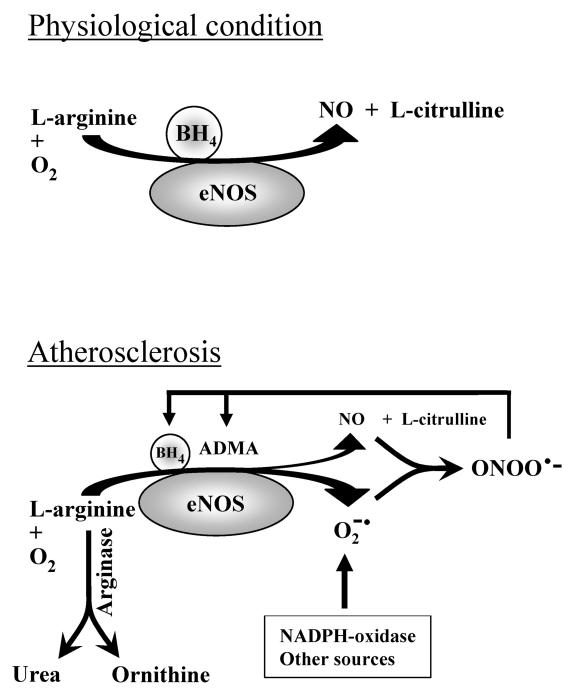Figure 2.
Mechanisms of eNOS uncoupling in atherosclerotic endothelial dysfunction. (A) Under physiological conditions, endothelial cells produce NO from L-arginine in the presence of optimal concentration of the co-factor tetrahydrobiopterin (BH4). (B) Under pathological conditions, such as atherosclerosis, a decrease in endothelial BH4 production, an increase in formation of endogenous eNOS inhibitor ADMA and an increase in arginase activity which metabolizes L-arginine into urea and ornithine, causes eNOS uncoupling, a condition that leads to superoxide anion (O2−) production and less NO release. O2− produced from eNOS uncoupling and other enzymes reacts with NO to generate a more potent oxidant peroxynitrite (ONOO−) which further inactivates BH4 and increases ADMA accumulation in endothelial cells, leading to endothelial dysfunction and may promote atherogenesis.

